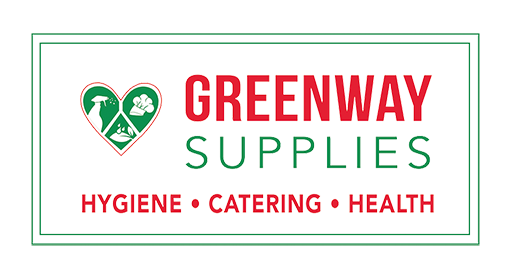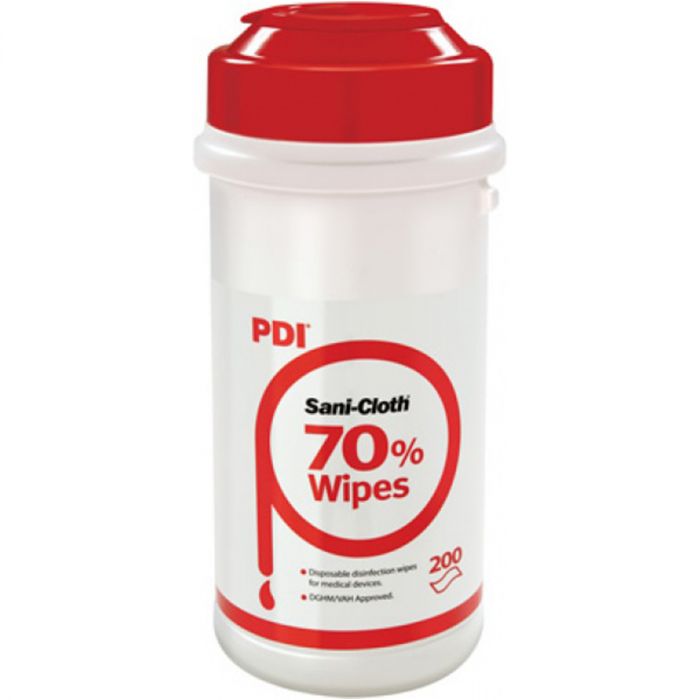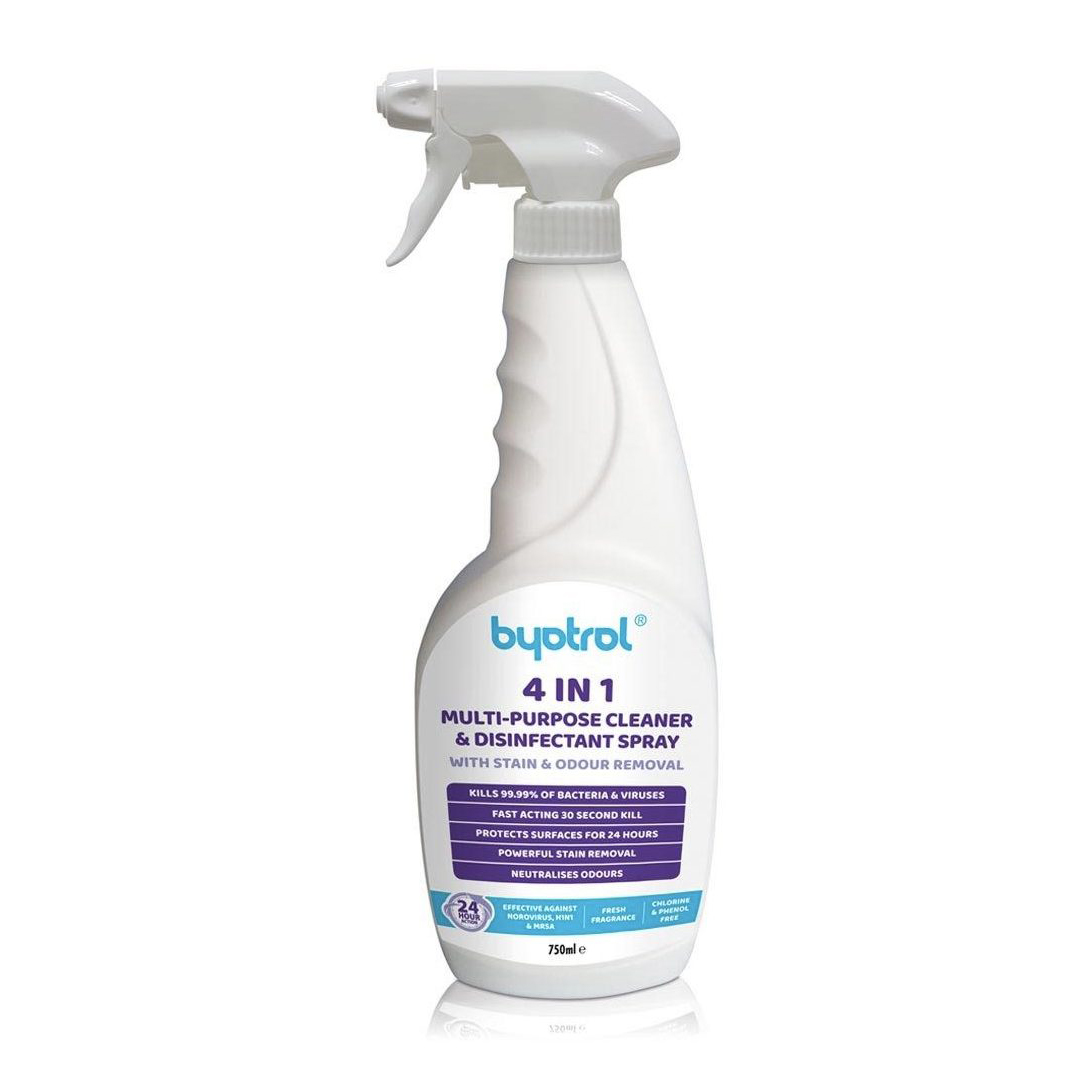How to open a coffee shop
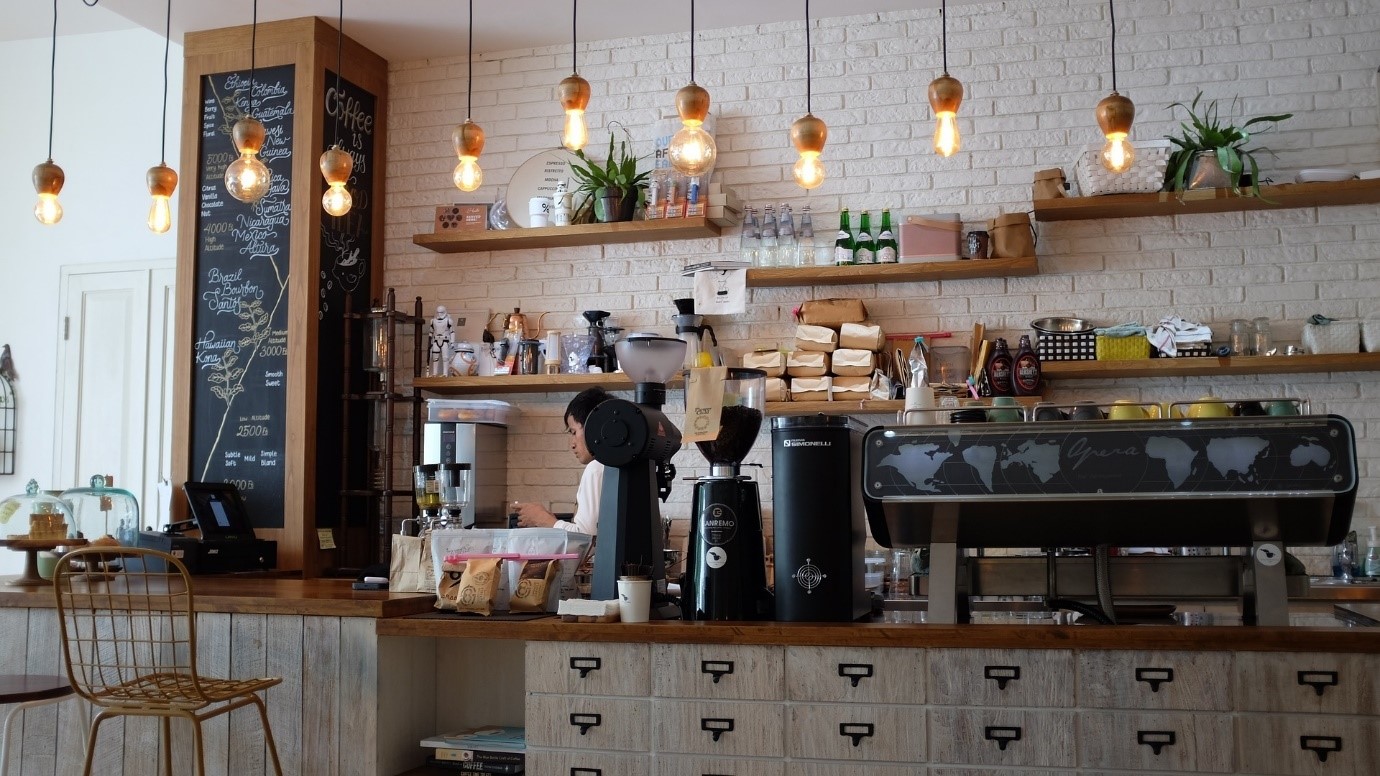
The Irish nation is starting to wake up and smell the coffee.
Although a competitive industry your business will need to stand out from the crowd if you want all those coffee lovers to spend their hard-earned cash in your shop. While great coffee will be at the heart of your business, you’ll also need a killer concept, a venue that appeals to your target customers, and the right equipment and supplies to serve every cup to perfection.
In this guide, we’ll show you how to open a coffee shop, covering every aspect in detail, including:
- Creating a coffee shop business plan
- Envisioning your venue: creating a concept
- Getting started: Rules and regulations
- Choosing equipment
- Hiring staff
Creating a coffee shop business plan
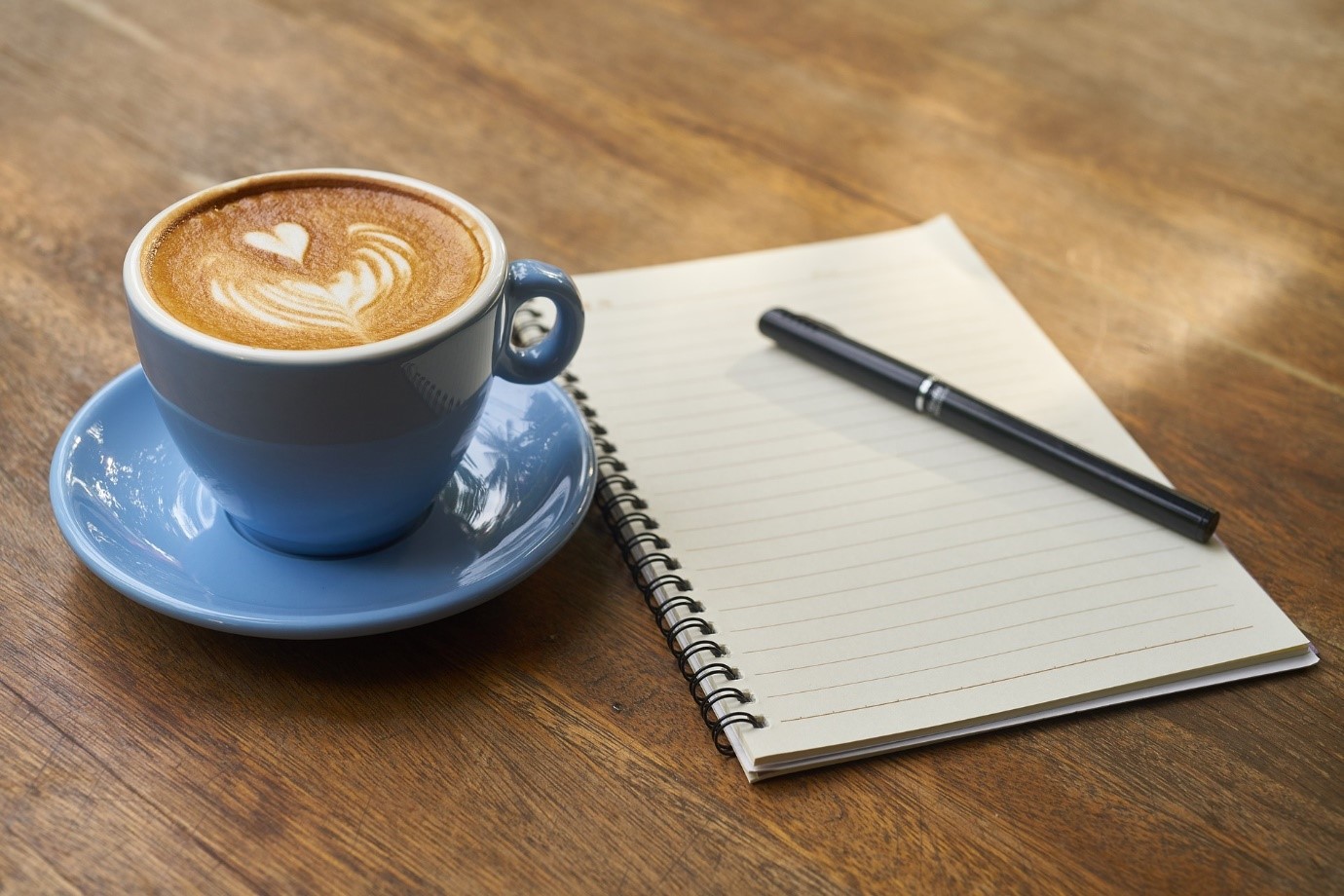
Before you can start hunting for a venue or thinking about equipment, you need to sit down and write a coffee shop business plan. Writing a business plan will help you to clarify your ideas, establish (and stick to) a budget, and spot potential problems before they happen.
Your business plan should spell out exactly how you’re going to finance and open your coffee shop, including a detailed breakdown of how your business will make money. You should also explore your customer profile, competitors, and plans for expansion in some detail. If this is your first venture, it may help to use a template to help you write your plan.
Creating a concept
While the demand for quality coffee is a great sign for vendors, it also means that you’re going to be up against some strong competition when it comes to attracting customers. If you want to draw the crowds, you’ll need to find a way to stand out.
The best way to do this is to create a unique concept which offers customers something a bit different to anything else in your area. In this section, we’ll talk you through the essential things you need to consider when creating a concept for your coffee shop.
Scope out the competition
It’s important to find a niche, so you’ll need to spend some time analysing the market in your area. Pay a visit to each coffee shop near where you plan to open and make notes on every aspect of the business. Pay attention to which elements of their businesses work well, and those you think could be improved.
It will also help if you research how many competitors are franchises and how many are independent.
While competing with major corporate chains can be a challenge, it is possible — particularly if you make the most of your status as a small local business. For instance, offering authentic coffee from local suppliers; making fresh, high-quality food; and giving your shop a friendly, community-minded feel will really set your shop apart from well-known brands. It will also help if your décor feels different to that of the major chains, too.
If you’ll be up against lots of other independent businesses, then you’ll need a venue which offers something completely unique if you want to stand out. For instance, you could give your shop an edge by building your menu around vegan drinks and food, or by making a unique style of coffee — like drip-through or pour-over filter coffee — your focus product. If there are already a lot of independents in your area, it may be worth opening a coffee shop in a location with a lower concentration of existing outlets.
Research your target market
Who is your coffee shop for? When designing your concept, you need to have a strong sense of who your target market will be. Your customer profile will dictate everything about your venue, from the drinks you serve to the ambience and décor. More importantly, it will also have a huge influence on the pricing of your products, as certain demographics — like students — will have smaller budgets.
Consider the age of your target demographic, and what their needs are likely to be. For instance, if you’re aiming to attract families, then offering a children’s menu and supplying some toys and games is a great place to start. Or, if you want to target students and young professionals, take a look on Instagram to see what sort of décor, food, and coffee inspires them. Student discounts and special offers won’t hurt your chances with a younger demographic, either.
When deciding on a customer base, remember that the sort of clientele you will attract is at least partly based on the location of your venue. For instance, there’s no point targeting a professional audience if your coffee shop will be located in a part of town that’s heavily populated by students, or vice versa. So, work out what sort of people live or work locally, and what their interests and budgets are like.
Ambience
Coffee shops are more than just a place to grab a quick drink and a snack. If you get the layout and interior design right, your coffee shop will also be a place where your customers come to socialise, work, or just escape for a relaxing break.
So, it’s important to give some thought to the ambience of your coffee shop. What sort of atmosphere do you want to create? Will it be chilled and relaxing, or lively and fun? The lighting, furniture, and music will all aid in setting the right tone.
Your product (and presentation)
The drinks you serve will be the heart of your coffee shop. While an inviting shopfront and ambient atmosphere might draw in customers, it’s ultimately your products which will convert them to loyal patrons. So, when drawing up your concept, you need to think about what sort of focus your products will have, and how you’re going to make your drinks stand out.
Coffee drinkers are typically looking for three key things: variety, quality and options for customisation. Many independent chains will opt for a wide selection of premium blends and beans from local suppliers and roasters. This will really set you apart from big-name competitors, who typically only offer a couple of choices ,It’s also a good idea to have a couple of signature drinks on your menu: matcha lattes, and seasonal coffees have all become popular menu options in recent years.
The presentation of your drinks is another important aspect of your concept. Serving drinks that look great is key to branding and consistency and shows that you’re serious about the quality of your coffee. Plus, photogenic, Instagram-friendly drinks are more likely to be a success on social media.
Your budget
There’s one major consideration you should bear in mind throughout the planning process: your budget. There’s no point dreaming up a lavish venue if it’s not going to be financially sustainable in the long run.
You should have set out your budget in your business plan, so break down your budget into individual figures for each part of your shop, including the venue, equipment, supplies, staff, and marketing. As your budget probably won’t cover everything you might like, you’ll need to work out which aspects you want to prioritise. For instance, is it important to have an impressive shopfront, or would you rather focus your spending on the best equipment and supplies, and then update your premises further down the line?
Once you’ve perfected your concept, and decided how to spend your budget, you can start hunting for a venue.
Rules and regulations for opening a coffee shop
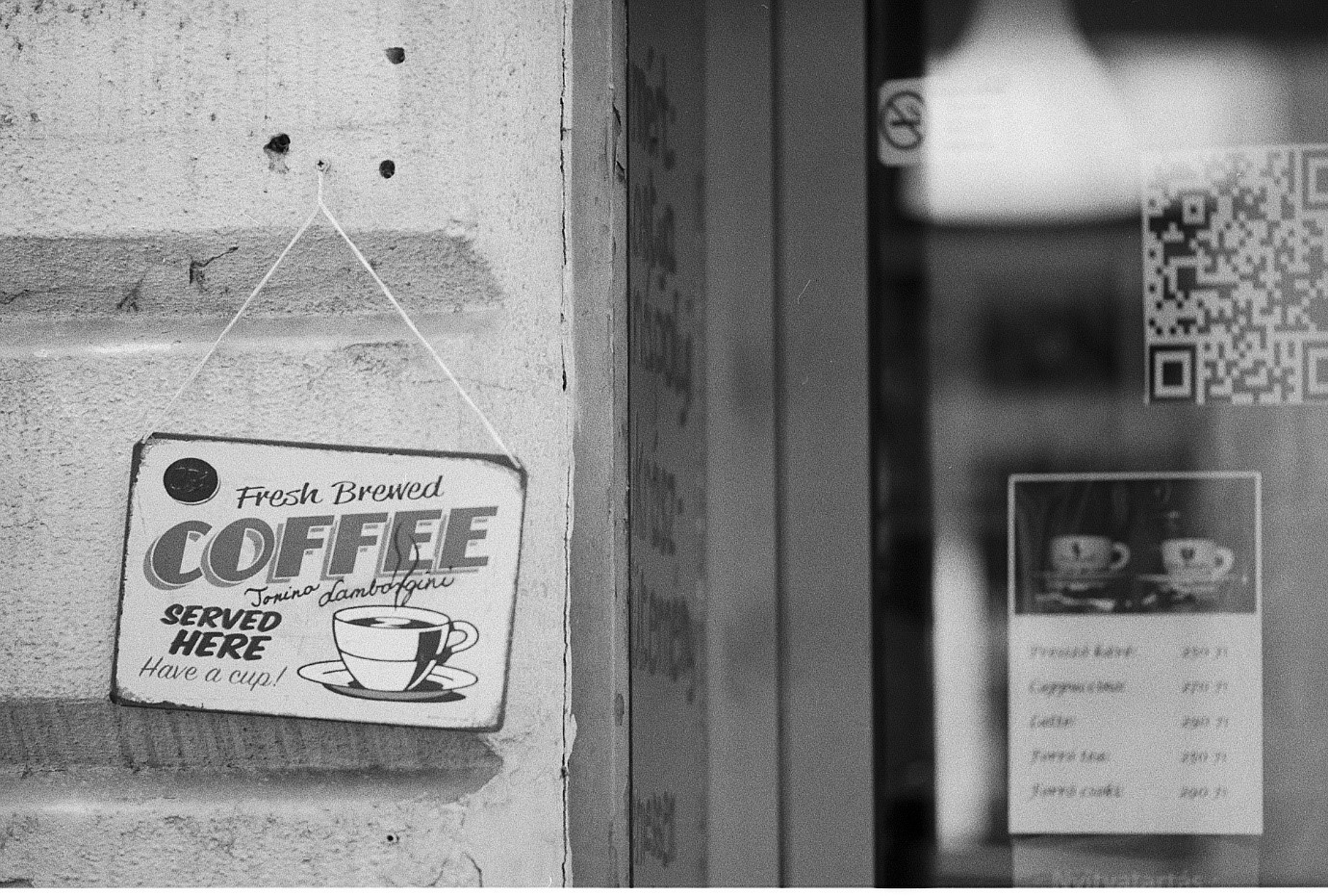
Now for the boring stuff: dealing with the myriad of rules, regulations, and red tape that come with owning a business. But, while it may not be the most exciting part of opening a coffee shop, it’s essential that you get up to speed with your legal duties before you start serving customers.
In this section, we’ll talk you through the various licences you’ll need, how to get the right planning permission, and the health and safety processes you’ll need to complete before you can open a coffee shop.
Registering as a food business
Any establishment which plans to carry out food operations must register as a food business with the local authority. ‘Food operations’ are defined as any activity where you’ll be selling, distributing, storing, or preparing food. So, if you’ll be cooking your own food on-site or selling snacks and meals sourced from a supplier, you’ll need to apply. Remember, fresh milk is categorised as a dairy food product, so even if you only plan to serve coffees which use milk as an ingredient, you’ll still be obliged to register your premises as a food business.
Health and safety
As a business that serves food and drink to the public, you’ll need to comply with the rules and regulations set by the Food Standards Agency in all aspects of your day-to-day operations.
There are lots of things to consider, so it’s a good idea to spend some time brushing up on all things health and safety with the HSA. They also have a selection of food handling and safety training videos on their website these can be especially helpful when the time comes to train your staff. If you don’t have much previous experience in a café or coffee shop, it may help to take a course to bring you up to speed. You can find a course near you by contacting your local council.
To ensure your coffee shop is complying with health and safety rules, your premises will be inspected by the local authority at least once a year. The inspection officer may visit at any time during opening hours and you won’t be warned, so you should be completely confident that excellent hygiene standards are maintained at all times, and the correct protocols are always followed — even when you aren’t supervising your staff directly.
Licence to play music
Background music is one of the most effective ways to instantly create a relaxing atmosphere. If you plan to play music of any kind in your coffee shop — whether it’s in customer or staff areas — you’ll need a music licence. These are supplied by IMRO and prices are worked out according to the size and needs of your business.
Choosing the right equipment
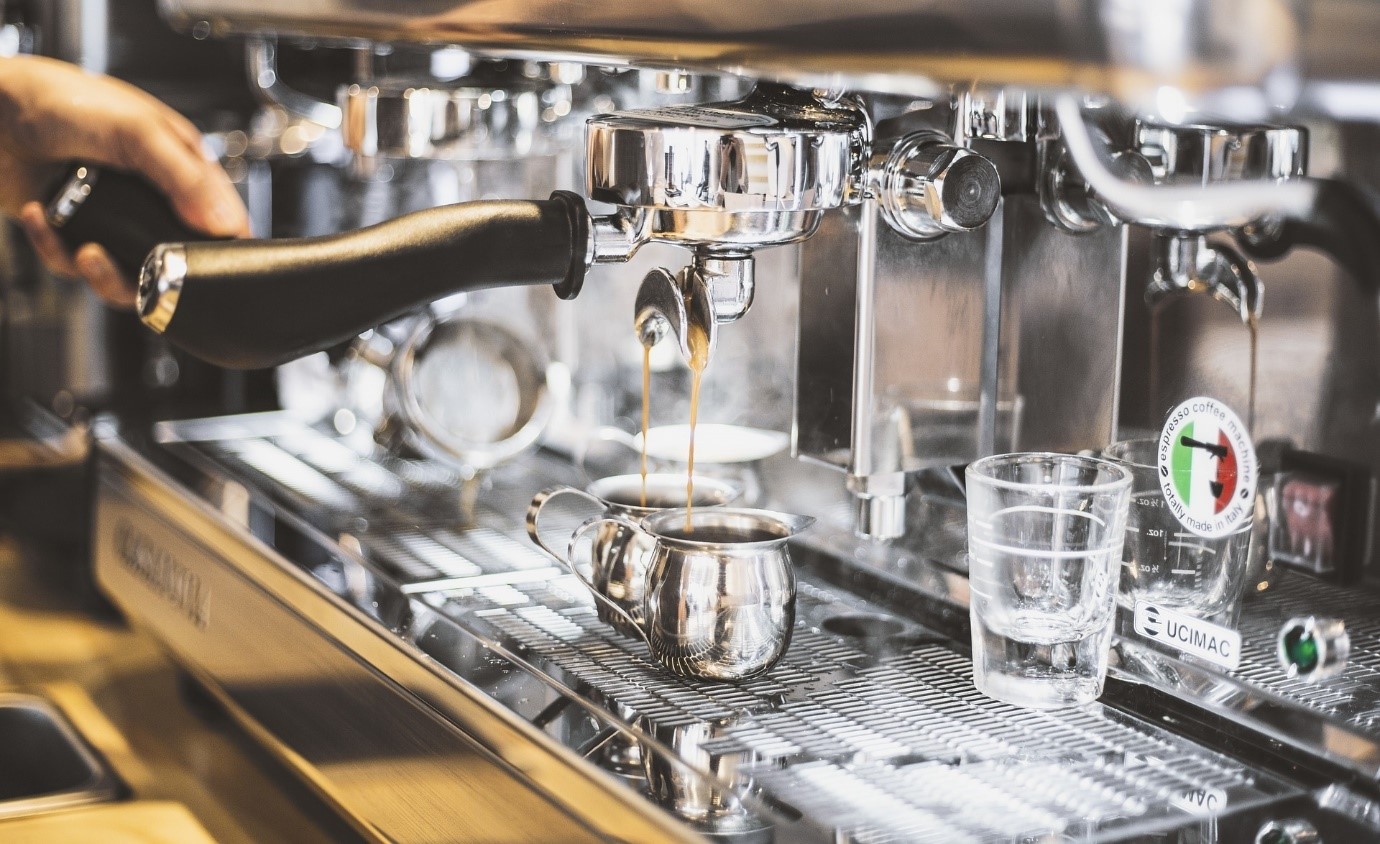
So, you’ve finally found the ideal venue, and your dream is starting to take shape. Now, you need to get your coffee shop kitted out with all the equipment you need to prepare hot and cold food, store supplies and, of course, serve the best coffee in town. In this section, we’ll talk you through all the essential equipment you’ll need to get your coffee shop up and running.
Coffee machines and drinks
It might go without saying, but coffee is going to be your core product, so choosing the right coffee machine is paramount. Most shops and cafes will opt for one of three different types: an espresso machine, a bean-to-cup machine, or a filter coffee machine. Here, we’ve broken down the pros and cons to help you decide which type is best suited to your shop.
Espresso machine: Espresso machines force pressurised hot water through ground coffee to create a smooth, flavourful espresso. The barista can then combine this with hot water, steamed milk and other ingredients to make americanos, cappuccinos, flat whites, and lots of other speciality drinks. Most come with a steam wand, which can be used to froth milk.
Espresso machines are prized for their versatility: while they might only produce one product, this forms the basis for countless other drinks. The espresso they produce is often punchy and flavourful and, when operated by a skilled barista, they can be used to create lots of impressively presented coffees. As they can be used to make multiple espressos in quick succession, they’re also useful for busy periods.
If there’s a downside to espresso machines, it’s that they can be quite expensive, and maintaining and cleaning your machine can be pricey. Your baristas will also need to be properly trained in using, maintaining, and cleaning them correctly, which can take time. But, if quality coffee is your main focus, your machine will likely be the most important part of your shop, so it’s sensible to set aside a decent portion of your budget for this.
A filter coffee machine: Many cafes and coffee shops will also offer customers a choice of filter coffee. One filter coffee machine can make a large batch of black coffee without need to refill or change the filter, which makes them a great-value option. Many cafés offer filter coffee as a low-cost alternative to espresso drinks, and may offer unlimited refills for a low price — great for enticing students or others on a budget into your shop.
Coffee grinder: If you plan to buy whole beans, you’ll need a grinder. Many coffee lovers prefer the taste of coffee made with freshly ground beans, so this is a must have if you want to cater to hardcore coffee lovers. A good grinder that produces a smooth, even grind will help you to get the best flavour from your beans, so it’s worth making sure yours is high quality.
Hot water dispensers: You’ll need a source of boiling water to make Americanos, and while coffee may have displaced tea as the nation’s favourite beverage, some of your customers are still likely to appreciate a good brew. A water boiler will provide filtered boiling water on tap, resulting in better-tasting tea, and meaning there’s no need to wait for a kettle to heat up.
Blenders: An industrial blender will let you get creative with frozen blended drinks and iced coffees, which are a popular option during the summer.
An ice machine: If you plan to make iced drinks a focus product during the warmer months, then an ice machine might be a worthwhile investment.
Cups, crockery and presentation
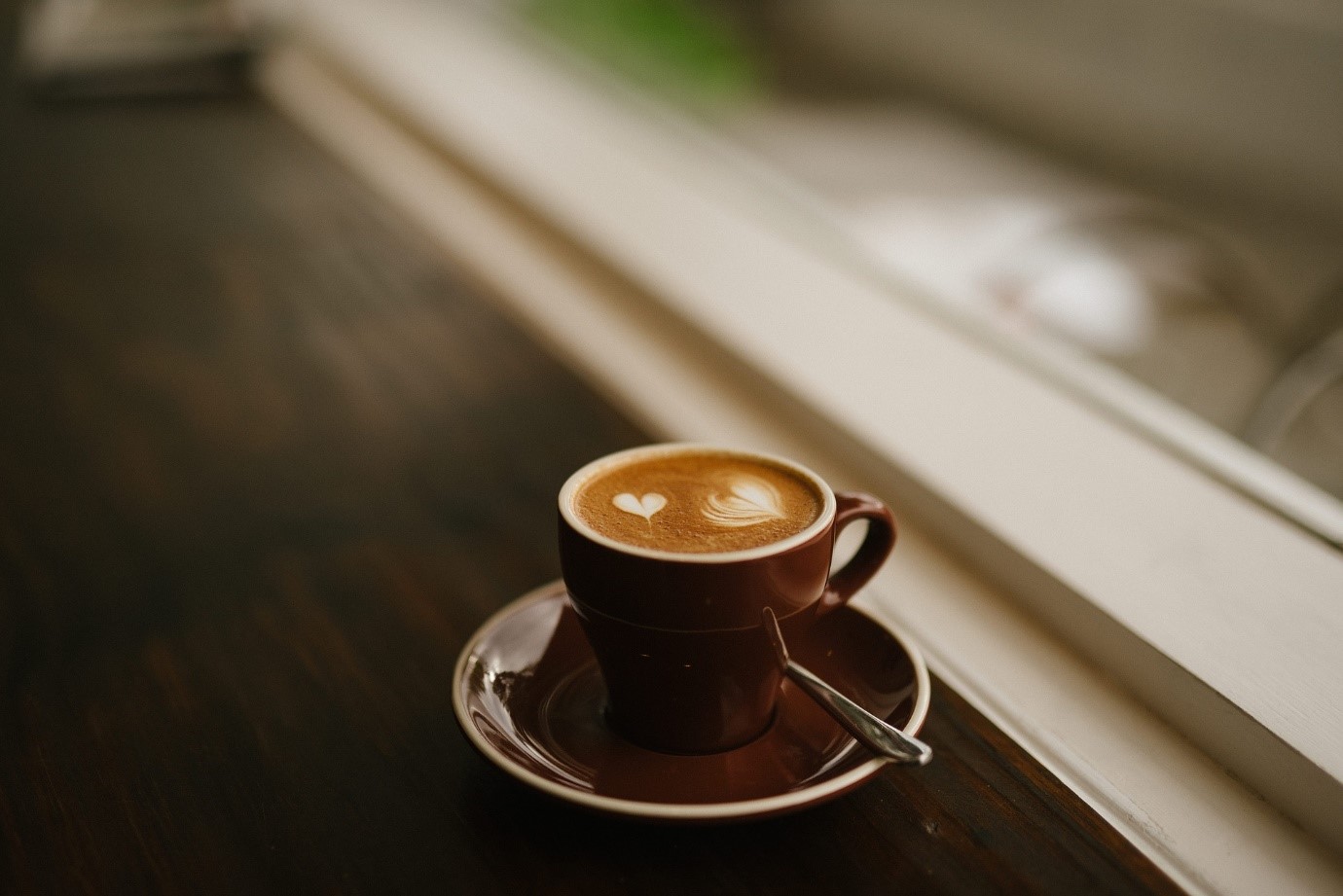
If you’re making hundreds of cups of coffee every day, you’ll need to find stylish yet hard-wearing cups to serve them in, as well as matching plates and dishes for snacks and meals. All of your crockery should be in-keeping with your overall brand, so think carefully about the colour, style, and feel. Do you want all of your crockery to be matching, or do you prefer an eclectic, mismatched look? Will you go for a traditional vintage look, or will you go for a clean, modern aesthetic?
Don’t forget that you’ll also need a dishwasher to keep all of those cups, saucers, plates and spoons sparkling clean!
Takeaway cups: Drinks and food to-go are likely to account for a large part of your sales, so you’ll need to have plenty of takeaway drinks cups and disposable food packaging on hand. Remember to choose sizes and styles which suit the size of your drinks and the style of food you serve. For instance, insulative foil containers and fast food cartons might be a better option if you serve lots of hot food.
Many coffee shops also offer a discount to customers who bring in their own reusable cups — you could even sell these on your coffee counter as an extra revenue stream.
Cooking equipment
If you serve toasties, soups, and other hot foods, then you’ll need a fast, efficient way to heat them up. A toaster is useful if you’ll be serving breakfasts, and a microwave can be useful for reheating soups. If you’ll be serving soup, a soup kettle will keep it at a consistent temperature throughout the day — they’re also useful for maintaining casseroles, stews and chillies warm. It’s essential that these are easy and fast to use, and positioned carefully so that front-of-house processes aren’t held up each time your employees need to use them. So, remember to allow space for these when designing your kitchen and counter.
Refrigeration: Your kitchen and coffee counter area will need at least two separate fridges: one for storing milk and other drink supplies, and one for storing food. Many coffee shops prefer under-counter refrigeration, as this fits neatly into a limited space while keeping your front-of-house space looking neat and presentable. Glass-fronted refrigerators can be useful, as your staff will be able to see what’s in stock — and what’s running low — at a glance.
If you’ll be preparing food in advance and then heating up to order, it’s a good idea to display your prepped meals in a refrigerated display case near the counter. This way, customers can see what’s available. If you want customers to be able to pick out their own chilled drinks and food, then a multideck fridge might be a better option.
Hiring staff: Finding, training and managing baristas
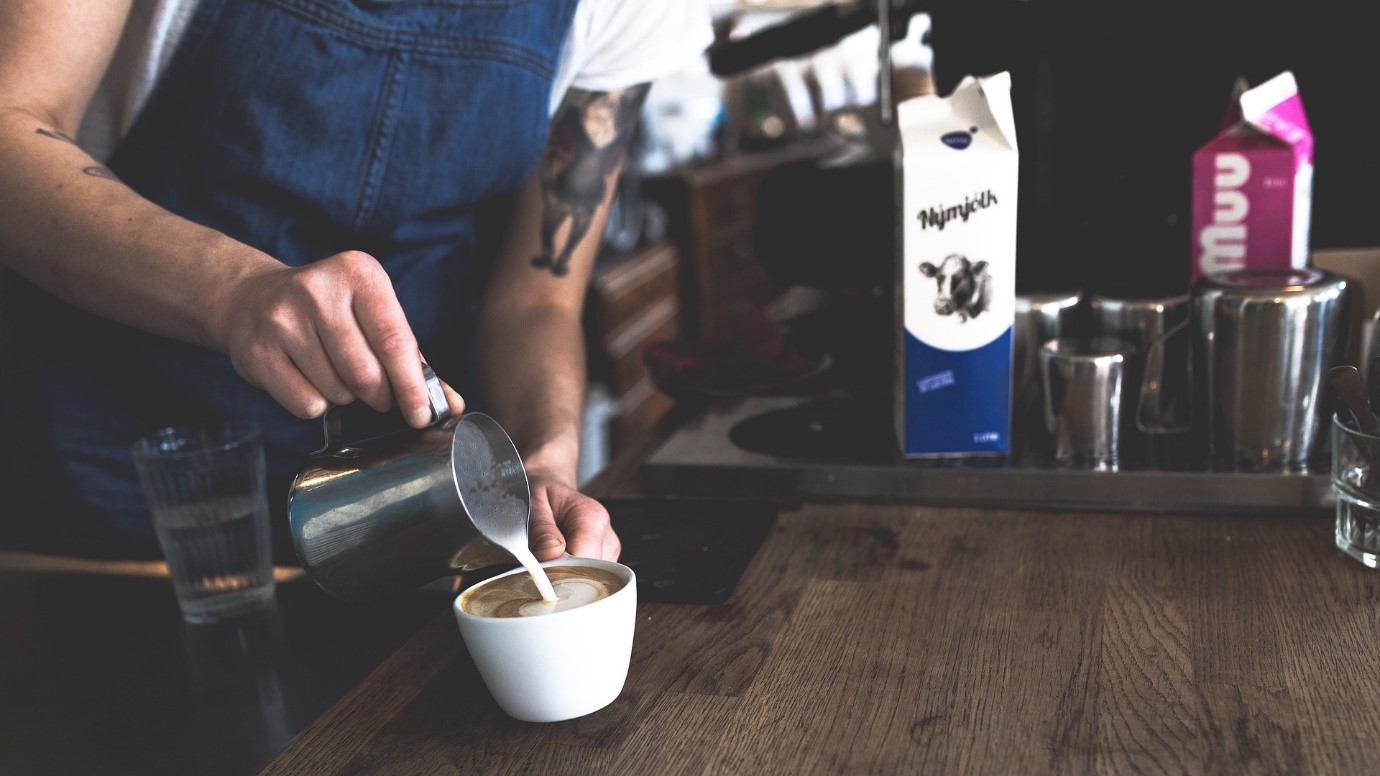
Unless you plan to staff your coffee shop by yourself, your next step will be to hire a friendly and reliable team of baristas.
If you want to build a reputation as a retailer of quality coffee, then it’s essential that your staff know their beans (literally). Second, to quality equipment, your employees’ training is what will ensure you’re consistently serving delicious drinks, so you need to find a team who are friendly, efficient and able to tell their flat white from their long black. They’ll also need to be able to offer recommendations and explain the tasting notes of each beverage.
Making great coffee using an espresso machine takes time, experience, and skill. So, it’s important that your baristas either have past experience of this or that you provide comprehensive training prior to opening. You’ll also need to make sure that everyone is familiar with the menu and knows how to prepare or reheat dishes to order in a safe and efficient way. Basic health and safety training is also a must.
When you’ve found your dream team, you’ll need to set up a work rota. Keep in mind your staff budget and remember to consider fair shift patterns and hours. Try to mix up the experience levels on each shift: even during the first few weeks, it’s unlikely that you can be in the shop every second of every day, so try to ensure there’s always at least one staff member with previous experience on duty.
Lastly, consider whether you’ll supply staff with any uniforms. In most cafés, staff wear their own clothing, but usually with an apron or some other form of the protective garment. You’ll also need to decide whether you’ll issue staff with the likes of branded T-shirts and name badges. You can learn more about this in our guide to wearing the correct uniform in hospitality.
Now you know how to open a coffee shop, you can start putting your plans into action. Like any commercial business, it takes passion and dedication to get it off the ground, and it can be an around-the-clock commitment. But, with a strong concept, a smart business plan, and a lot of hard work, you can make your dream into a career. Here at Greenway Hygiene & Catering Supplies, we stock everything you’ll need to get your coffee shop up and running
- Greenway Supplies
- April 22, 2022
- 8:25 am
Archived Posts
- February 2024 (2)
- January 2024 (3)
- November 2023 (2)
- September 2023 (2)
- August 2023 (1)
- June 2023 (5)
- May 2023 (6)
- April 2023 (5)
- March 2023 (4)
- February 2023 (3)
- January 2023 (2)
- December 2022 (3)
- November 2022 (6)
- October 2022 (3)
- September 2022 (5)
- August 2022 (4)
- July 2022 (4)
- June 2022 (6)
- May 2022 (1)
- April 2022 (4)
- February 2022 (2)
- January 2022 (1)
- July 2021 (1)
- June 2021 (2)
Video/Blog Categories
- Bars (9)
- Blogs (42)
- Cleaning Supplies (22)
- Coffee Shop (5)
- Kitchen (23)
- Mops & Floor Hygiene (2)
- Uncategorized (1)
